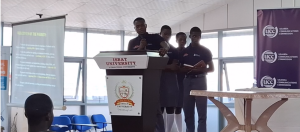Levels of Artificial Intelligence – Narrow AI, General AI, and Superintelligent AI

When we talk about Artificial Intelligence, it is important to understand that AI exists at different levels of capability. Not all AI systems are the same. Some are designed for very narrow tasks like predicting tomorrow’s weather, while others are envisioned to one day think as broadly and deeply as humans—or even beyond. For ICT Clubs and teachers in Uganda, this knowledge helps us understand where AI is today, where it is heading, and what responsibilities come with each level. The three main levels are Narrow AI, General AI, and Superintelligent AI.
1) Narrow AI – The AI We Use Today
Narrow AI, also called Weak AI, refers to AI systems designed to perform one specific task or a small set of tasks. They are “narrow” because they cannot go beyond what they were trained or programmed to do. For example, a chatbot designed to answer banking questions cannot suddenly help you cook a meal. It only works within its limited scope.
In Uganda, examples of Narrow AI are everywhere. Mobile money fraud detection systems, YouTube video recommendations, Google Translate for Luganda-English translation, and AI-powered soil analysis apps for farmers are all Narrow AI. They are powerful because they can process huge amounts of data faster than humans, but they do not “understand” the world—they only follow patterns.
📌 Practical Example: Think of a calculator. It can solve math problems faster than you, but it cannot write an essay or drive a car. Narrow AI is like a super calculator applied to many different areas of life. ICT Club members can experiment with Narrow AI tools such as Teachable Machine by Google, which allows you to train a model to recognize cats vs. dogs using just a few images.
2) General AI – The Dream of Human-Like Intelligence
Artificial General Intelligence (AGI), often called Strong AI, is the next level. This type of AI would be able to think, reason, and learn across many different domains, just like a human being. Unlike Narrow AI, which only does one thing well, General AI would be able to handle multiple tasks, transfer knowledge from one area to another, and even understand context and emotions.
For example, imagine a future AI teacher in Uganda who could not only help a student solve a math problem, but also give career guidance, translate lessons into Lusoga or Lugbara, and counsel them if they are feeling discouraged. This is the dream of General AI—a system that can interact with humans naturally across different subjects and situations.
Currently, General AI does not exist yet. What we have are powerful Large Language Models (LLMs) like ChatGPT, Bard, and Claude, which seem “intelligent” because they can answer a wide variety of questions. However, even these advanced tools are still Narrow AI, because they do not truly “understand” in the human sense. They are limited by their training data and cannot think independently.
📌 Discussion Point for ICT Clubs: Students can debate whether AI like ChatGPT is close to General AI. Ask: If AI can write essays, code programs, and answer history questions, is it already “general”? Or is it still narrow because it cannot set its own goals or understand emotions?
3) Superintelligent AI – Beyond Human Intelligence
The third level, Superintelligent AI, is the most futuristic and controversial. This refers to AI systems that would surpass human intelligence in all areas—science, creativity, problem-solving, emotional understanding, and even wisdom. A Superintelligent AI could, in theory, design technologies we cannot imagine today, cure complex diseases instantly, or solve global challenges like climate change faster than any government or scientist.
However, this also comes with serious risks. If AI becomes more intelligent than humans, who will control it? Will it act in ways that support humanity, or could it act against human interests? For example, if a Superintelligent AI decided that reducing climate change required stopping certain industries, it might make decisions that harm millions of jobs unless carefully controlled.
In Uganda, the debate on Superintelligence might seem far away, but it is important to prepare students early. As future leaders, innovators, and policy-makers, they will be part of shaping how Africa engages with advanced AI. Preparing now ensures Uganda does not remain only a consumer of other nations’ technologies but becomes an active voice in global AI ethics and governance.
📌 ICT Club Reflection Activity: Ask students: If a Superintelligent AI were built in 2050, what laws and safeguards should Uganda put in place to ensure it benefits everyone? Encourage them to link their ideas to values like inclusion, justice, and sustainability.
The three levels of AI—Narrow, General, and Superintelligent AI—represent the journey from the AI we already use today, to the AI we dream about, and finally to the AI that could potentially surpass us. Most of the AI in Uganda right now is Narrow AI, but by understanding these levels, ICT Clubs can start preparing for the bigger picture. This knowledge is essential because it reminds us that AI is not just a tool but a force that could redefine how societies function. The key lesson is to approach AI with curiosity, responsibility, and critical thinking so that when Uganda steps fully into the AI era, our students are not just users, but shapers of AI’s future.







I would wish to know about the free hosting companies that I can use for testing websites and apps which also support database backend